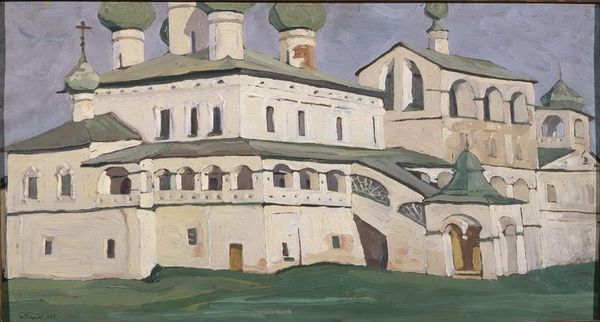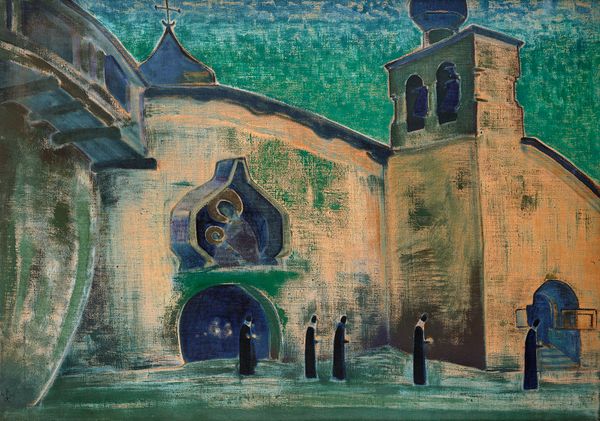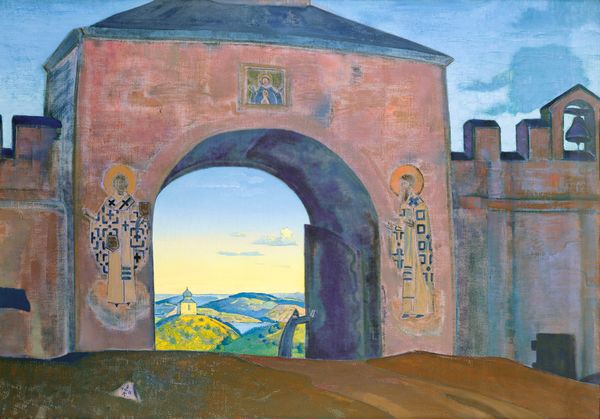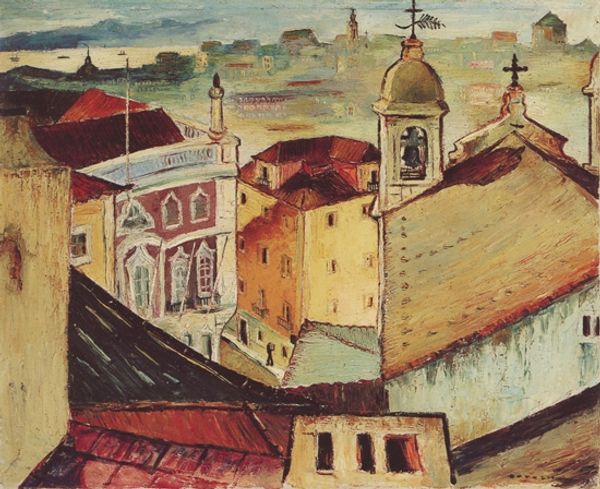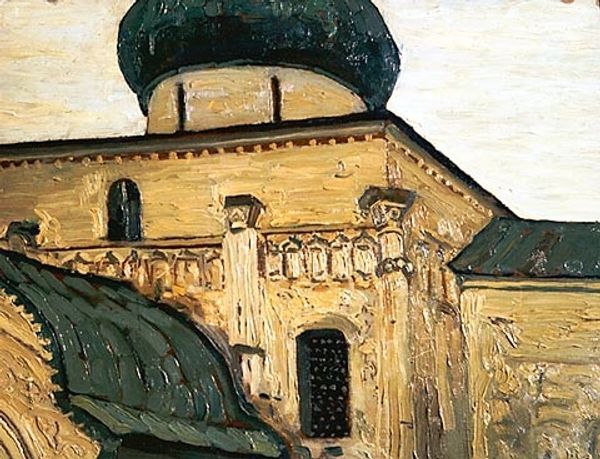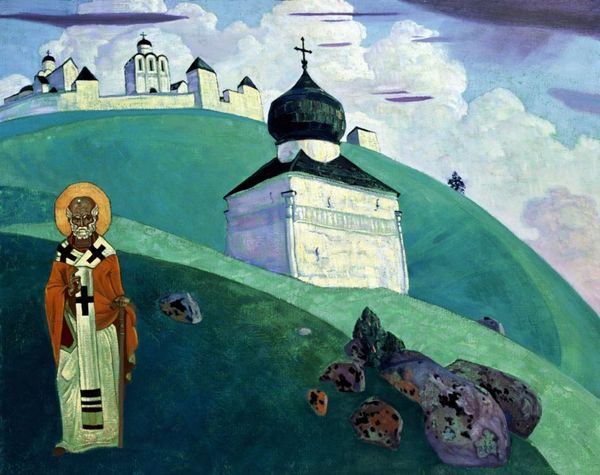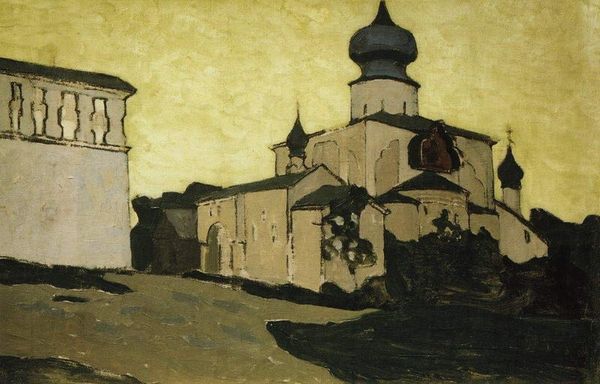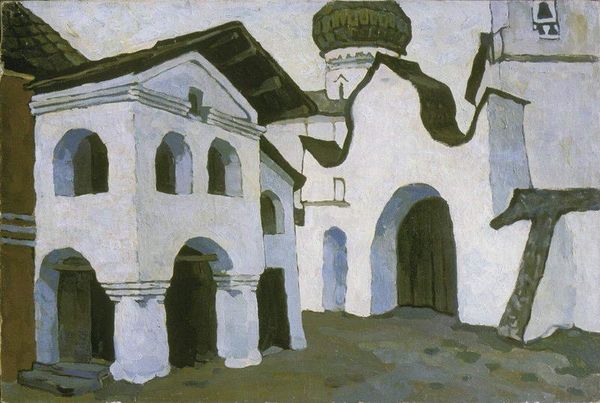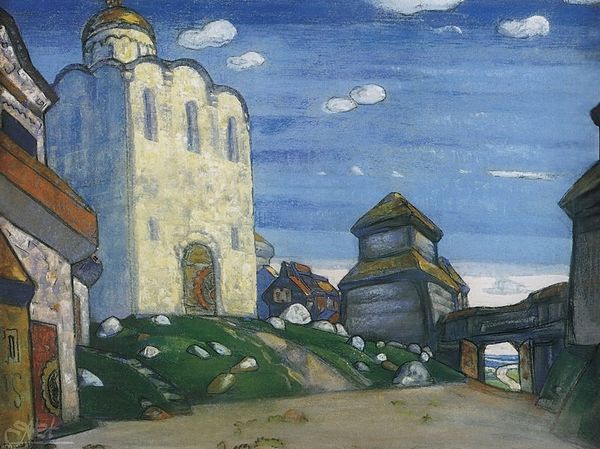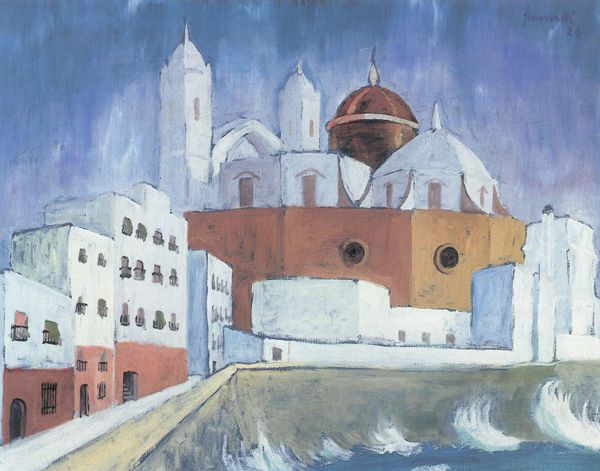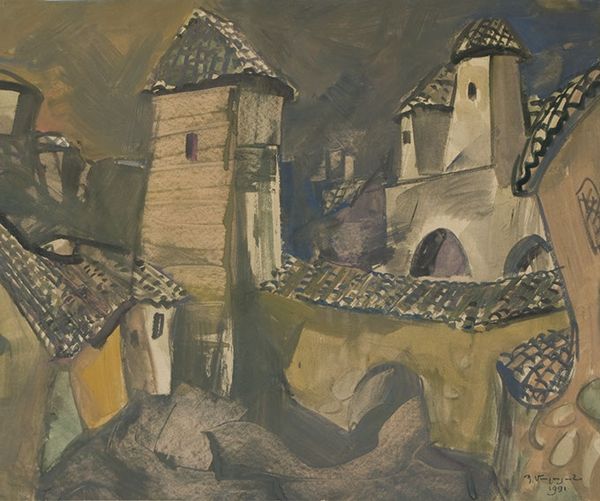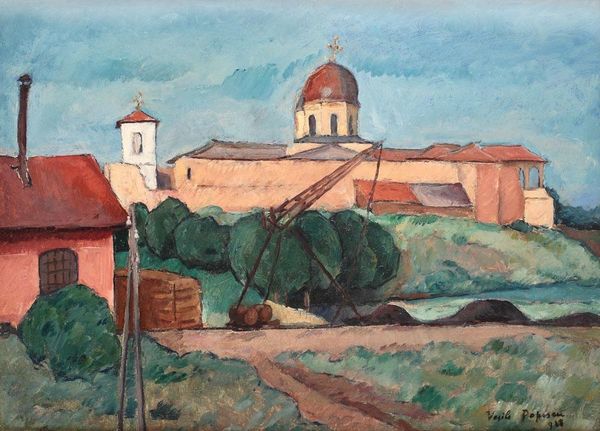
Dimensions: 51 x 76 cm
Copyright: Public domain
Curator: Looking at "Old Pskov," painted by Nicholas Roerich in 1922, now housed at the Nicholas Roerich Museum, what are your initial impressions? Editor: There’s something undeniably melancholic about this scene, isn’t there? The colors are muted, the composition seems to compress the architectural space, giving it a feeling of enclosure and… almost abandonment. Curator: Right. Roerich created this work using tempera and oil paint; look at the layering. You can really see how he's building up the paint to capture the texture of the stone and plaster. It seems relevant, considering Russia was undergoing profound shifts after the revolution; resources for building and maintenance must have been extremely limited. Editor: Precisely! Pskov, an ancient city, serves as a powerful symbol here. We see this city not just as a geographic location but as a repository of Russian history and cultural memory. The medieval style Roerich evokes positions Pskov as this enduring symbol for Russia's avant-garde movement. But how much is this iconography simply a consequence of the painting techniques available? Curator: That's a fair point, given the materials accessible during the time. However, I believe that the choice of imagery interacts with his color choices. The soft blues, pinks, and whites contrasted against darker hues definitely evoke a dream-like quality. Perhaps reflecting a yearning for the past or, even more, a hope that traditions will withstand contemporary shifts in ideology and materiality. Editor: And those arches, repeated like frames within frames, they almost feel like barriers. Are they historical remnants, romanticized, or critical statements about social stratification? We have a church on a raised part of the topography while this lone figure to the left almost cowers beneath a covered corridor. The piece encourages critical consideration of public roles in both religious and temporal domains. Curator: I agree. It certainly doesn’t present a purely celebratory view of the past. He acknowledges that history is multifaceted, textured by labor, belief, and human endeavor. I think understanding this from both historical and materialist perspectives encourages visitors to critically assess representations of culture and societal change, even today. Editor: Indeed. "Old Pskov" isn't simply a depiction of a place; it is a multi-layered visual articulation that speaks volumes about resilience, loss, and enduring value in the face of societal change. It's heavy with implications. Curator: Agreed. Roerich’s "Old Pskov" presents not only a visually striking cityscape, but invites dialogue and encourages us to look carefully at history through the lens of materiality, practice, and perspective.
Comments
No comments
Be the first to comment and join the conversation on the ultimate creative platform.
